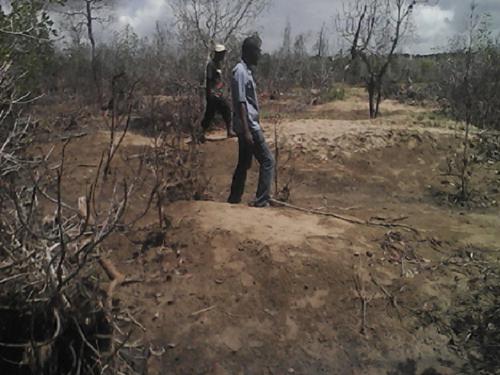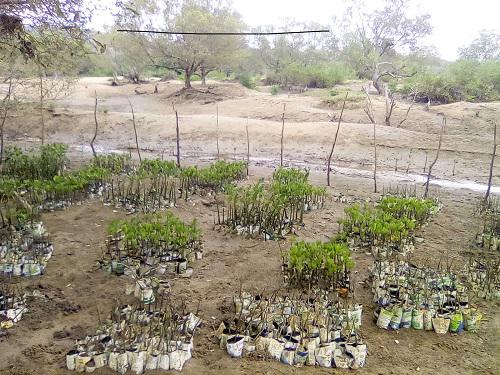Gilbert Nyabochwa Atuga
Other projects
4 Jun 2019
Mwache Mangrove Forest Regeneration: Integrated Approach to Restore Mangrove Habitat II
14 Nov 2022
Macroplastic Pollution in the Lower River Sabaki, and its Surrounding Environment: Its Influx to the Indian Ocean
Mangroves act as nursery grounds for fish, shoreline protection and ecotourism attraction. However, these ecosystems are under threat due to human and natural factors. In Mwache alone 200 ha of mangroves died in 1997 to 1998 El-nino. Efforts to restore this forest have borne little fruits mainly due to high mortality rate observed with reduced diversity. The objective of this project is to regenerate mangroves by building with nature using brush-wood groins structures to provide necessary growth conditions that together with replanting will lead to self-regeneration of mangroves in a way that will protect the ecosystem from future degradation.

Mangroves death due to sedimentation. © George Onduso, Kenya Marine and Fisheries Research Institute
Mangroves in Kenya are disappearing at an alarming rate. The most common method of regeneration of these forests in Kenya is through replanting. This approach is often not successful especially when reasons for mangrove degeneration were not removed prior to planting of new seedlings. This exacerbates the costs of planting with little success. However, when stressors are removed and suitable environmental conditions for mangrove growth are in place such as correct hydrology, calm area, erosion prevention and promotion of sediment deposition natural regeneration processes could recover mangroves from degradation. These therefore calls for creation of an enabling environment that can regenerate mangroves whereby obstacles are removed before replanting. The objective of this project will be use of bush-wood groins constructed from locally available materials to provide necessary conditions to attract mangrove recruits, and facilitate reestablishment and natural mangrove forest recovery with or without replanting. These structures provide favourable conditions by dissipating wave energy providing a calm area and stable substrate for mangroves growth.

A section of Mwache Mangrove degraded site. © George Onduso, Kenya Marine and Fisheries Research Institute
The project will be important to show why it is necessary to find out and remove reasons for degradation of existing mangroves before designing restoration project this will serve as pilot scale study to be replicated elsewhere. Also, the project emphases to build with nature will lower cost by reducing expenses incurred on 'blind' or conventional mangrove forest restoration. The project will therefore strive to save existing forest cover through stressors removal that led to degradation and hence increase forest cover with new recruitment and replanting. The improved mangrove forest cover will improve mangrove flora and fauna biodiversity. This will lead to improvement of coastal communities that rely on mangrove resources for their livelihoods. To add this strategy will avoid future degradation leading to improved ecosystem services provision.